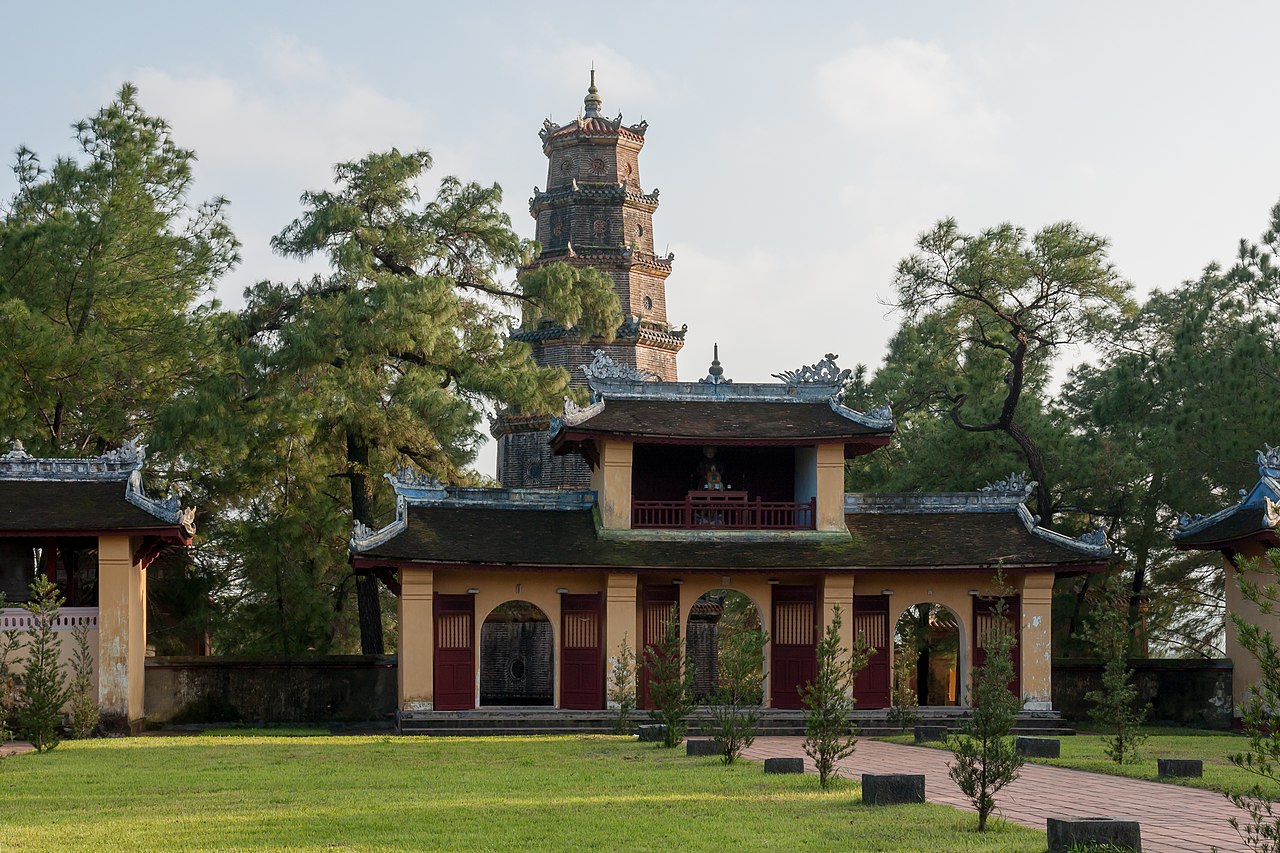Thien Mu Pagoda, also known as Linh Mu Pagoda, is one of the most iconic and revered religious sites in Vietnam, located on the banks of the Perfume River in Huế. With its stunning architecture, tranquil surroundings, and rich history, Thien Mu Pagoda holds deep cultural and spiritual significance for the Vietnamese people and visitors alike.
Constructed in 1601 during the reign of the Nguyen Lords, Thien Mu Pagoda has undergone numerous expansions and renovations over the centuries, resulting in its current majestic form. The pagoda’s name, Thien Mu, translates to “Heavenly Lady,” and it is dedicated to the Buddhist bodhisattva Avalokiteshvara, often depicted as the Goddess of Mercy.
One of the most striking features of Thien Mu Pagoda is its seven-story octagonal tower, known as the Phước Duyên Tower, rising majestically above the surrounding landscape. Each of the tower’s seven tiers is dedicated to a different celestial being, with statues, sculptures, and decorative motifs adorning its exterior. The tower’s elegant design and serene ambiance make it a popular subject for photographers and artists, symbolizing spiritual enlightenment and divine grace.
Surrounding the tower are lush gardens, lotus ponds, and ancient trees, creating a tranquil oasis that invites visitors to pause and reflect. The pagoda’s grounds also feature several other notable structures, including pavilions, shrines, and statues, each with its own unique architectural style and religious significance.
One of the highlights of a visit to Thien Mu Pagoda is the Dai Hung Shrine, located within the main hall of the pagoda complex. Here, visitors can pay their respects to the statue of Gautama Buddha, as well as other revered figures from Buddhist scripture and tradition. The shrine’s interior is adorned with intricate wood carvings, lacquerwork, and gold leaf, creating a sense of reverence and devotion.
Another significant feature of Thien Mu Pagoda is the giant bell housed within the pagoda grounds, known as the Dai Hong Chung. Cast in 1710, the bell is one of the largest bronze bells in Vietnam, weighing over 3,285 kilograms. It is inscribed with Buddhist scriptures and sacred symbols, and it is rung daily to call monks and devotees to prayer and meditation.
Thien Mu Pagoda is not only a place of worship but also a center of Buddhist learning and cultural exchange. Throughout its long history, the pagoda has served as a refuge for monks, scholars, and pilgrims seeking spiritual enlightenment and guidance. Today, it continues to attract visitors from around the world who come to admire its beauty, learn about its history, and experience the peace and tranquility that pervade its sacred grounds.
As one of Vietnam’s most iconic religious landmarks, Thien Mu Pagoda stands as a symbol of spiritual devotion, cultural heritage, and timeless wisdom. Its serene beauty and profound significance continue to inspire awe and reverence among all who visit, offering a glimpse into the rich tapestry of Vietnamese history and culture.



